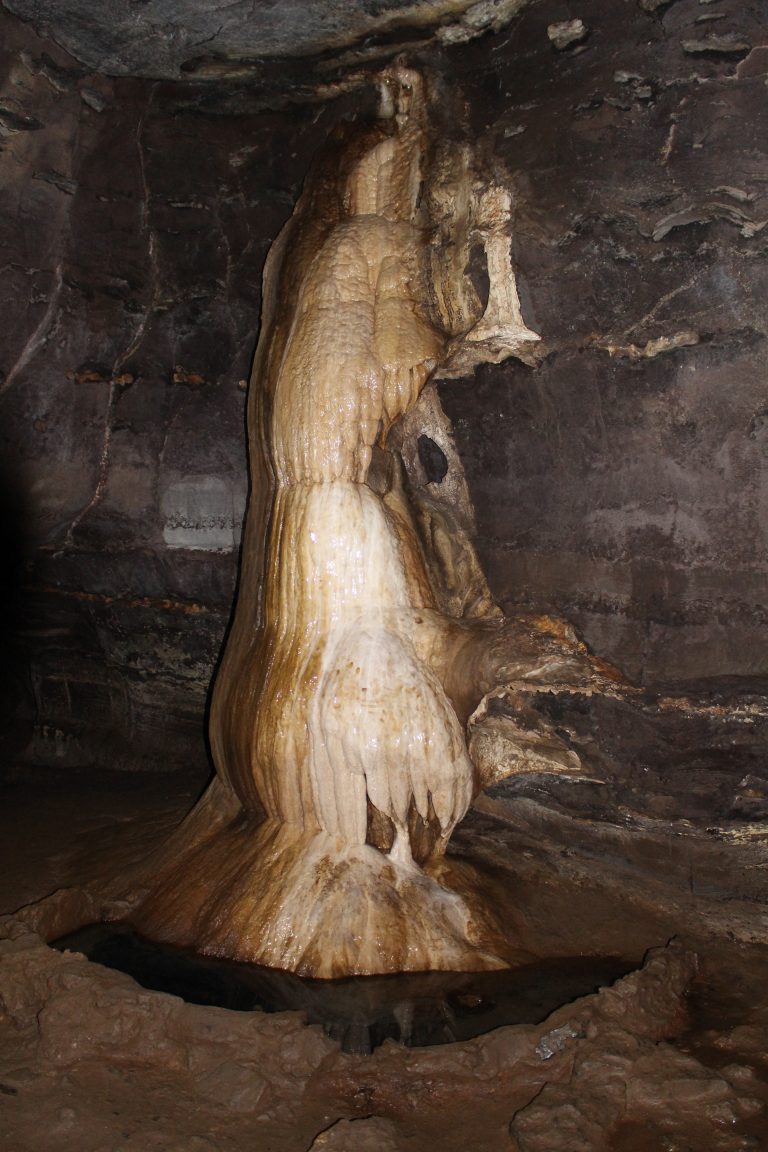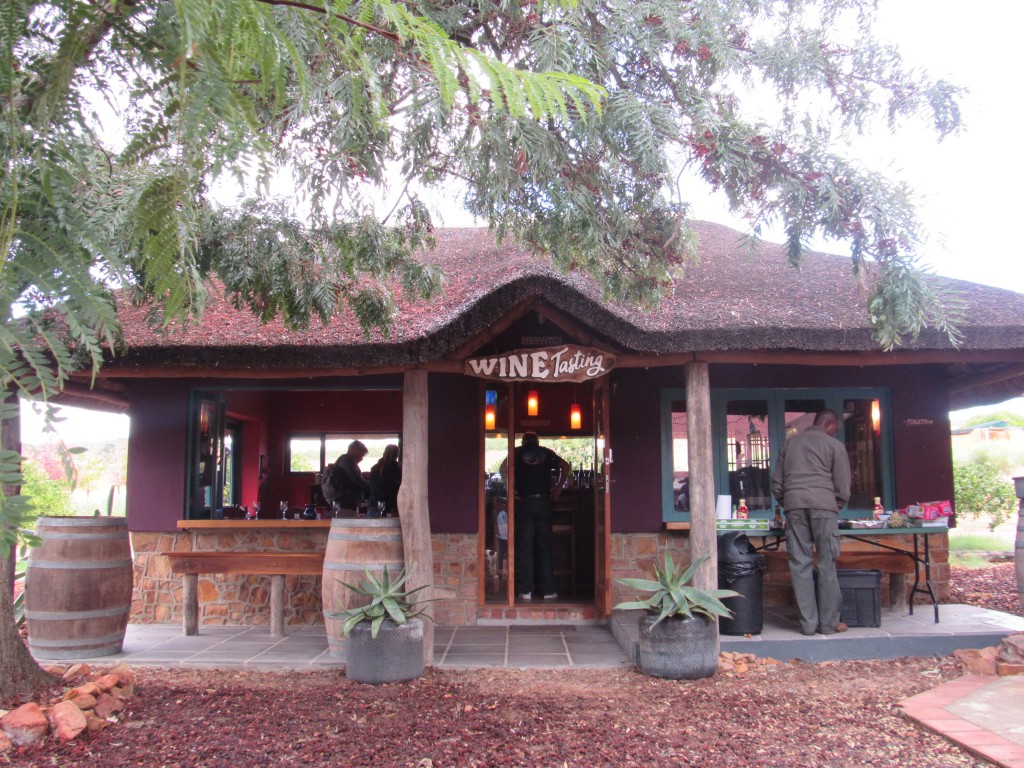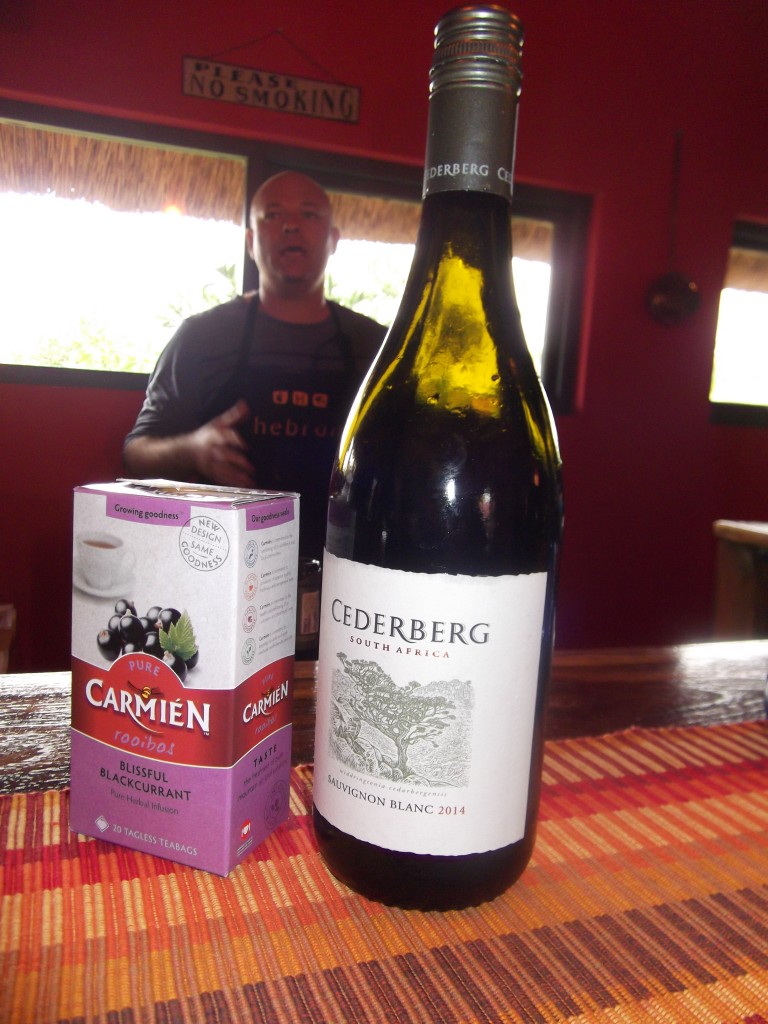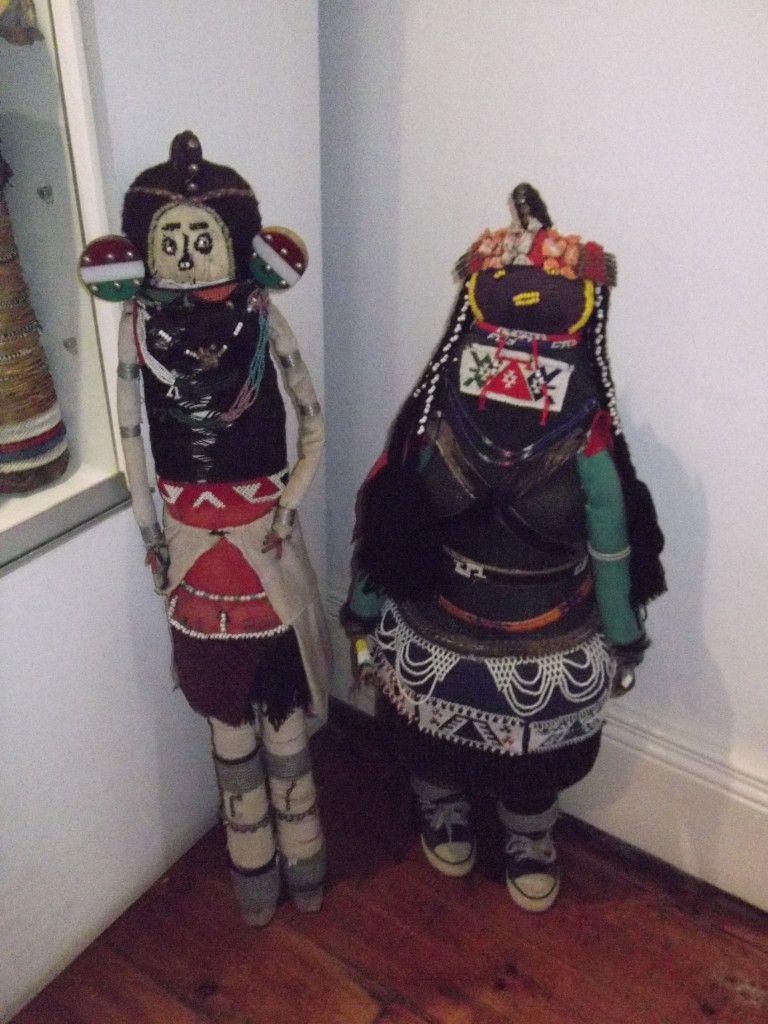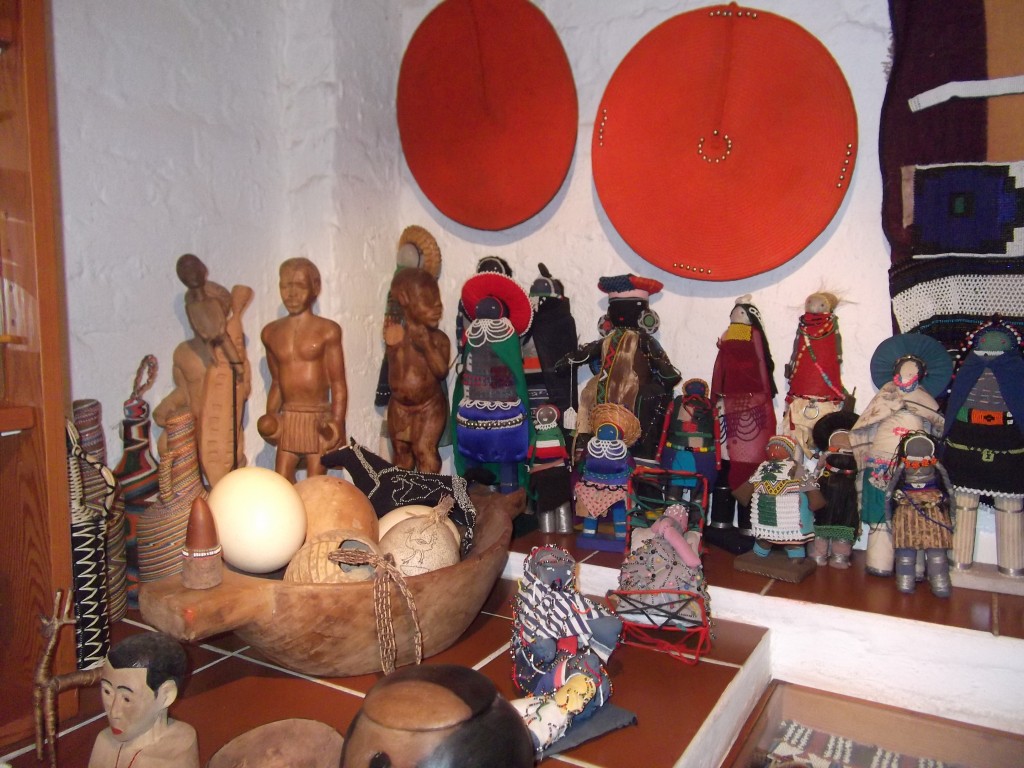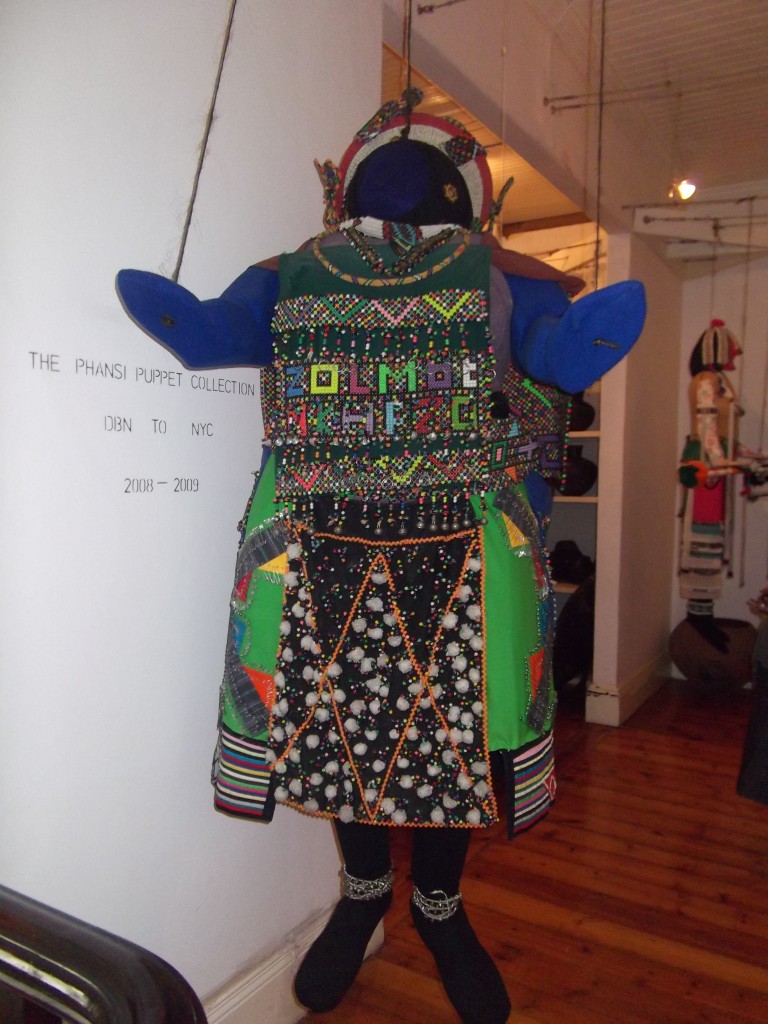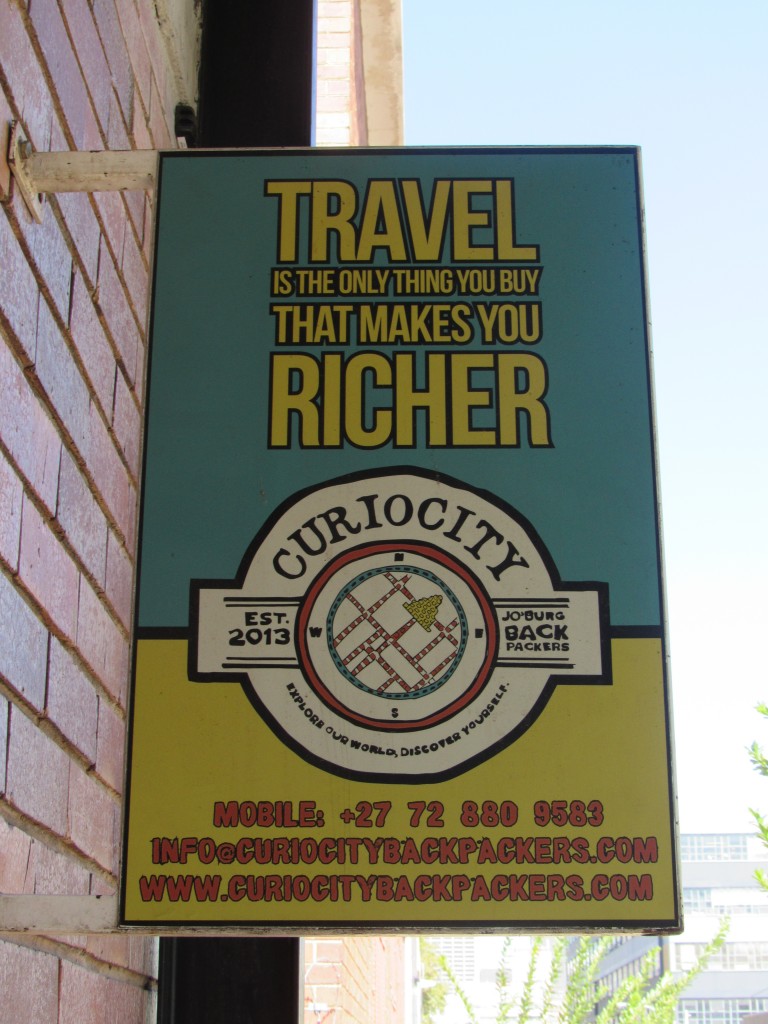The post The Top 8 Things to do in Mpumalanga first appeared on The Travel Sista.
]]>With its stunning views of Table Mountain and the Atlantic Ocean, Cape Town regularly graces the lists of the world’s best places to visit. Indeed, most visitors to South Africa will spend time in Cape Town, Johannesburg, and maybe even Durban. But while each of those places offers its own unique attractions, “those in the know” know that Mpumalanga is not to be missed.
Mpumalanga (a Zulu word meaning “the place where the sun rises”) is a province in eastern South Africa, bordering the nations of Swaziland and Mozambique. Just a one hour plane ride or four hour drive from Johannesburg, Mpumalanga is a nature lover’s dream with big game animals, a bounty of flora and fauna, mountains, canyons, caves, rivers, and waterfalls. Aptly known as “Paradise Country”, Mpumalanga will treat you to some of the most breathtaking scenery you’ve ever seen. Here are my top 8 things to do there:
1. Kruger National Park
Kruger National Park is South Africa’s premier safari destination. Covering more than 7,523 square miles and extending over two provinces, it’s one of the largest game reserves in Africa. All of the Big Five game animals are found at Kruger, as well as 336 species of trees, 49 species of fish, 34 species of amphibians, 114 species of reptiles, 507 species of birds and 147 species of mammals. Most visitors to Kruger self-drive, but park rangers also offer morning, sunset and evening game drives. Guided nature walks (with armed field guides) are also available. Kruger has numerous rest camps, private lodges, and several restaurants, allowing visitors with reservations to stay overnight inside the park. Park accommodations should be booked well in advance to ensure availability.
2. Private Game Reserves
Set alongside Kruger’s unfenced western boundary, Kruger’s Private Game Reserves – Thornybush, Sabi Sand, Kapama, Timbavati, Manyeleti, Klaserie, and Balule – offer some of the most exclusive safari experiences in South Africa. These luxury accommodations don’t come cheap, but the expense is well worth it. Most offer morning and evening game drives with experienced rangers and trackers in private 4-wheel drive vehicles. Their ability to engage in safari activities not permitted in Kruger, such as off-road driving and spot lit night drives, increase the likelihood of closer and more frequent animal sightings. And after long mornings and evenings of game viewing, you’ll be treated to gourmet meals and other amenities, like private butler service, spa treatments and private suites with magnificent bush views. Everyone should have the experience at least once.
3. Blyde River Canyon/Panorama Route
Blyde River Canyon is one of the largest canyons on Earth and considered by many to be the largest “green canyon” due to its lush sub-tropical foliage. Also known as Motlatse River Canyon, it is part of the Panorama Route, a scenic road covering nearly 240 miles and connecting several waterfalls, mountain passes and natural vantage points. Some of the popular natural landmarks include God’s Window, Bourke’s Luck potholes, the Pinnacle, the Three Rondavels, the Lisbon Falls, the Berlin Falls and the Mac Mac Falls. There also several historic and tourist towns along the route, including Pilgrim’s Rest, a restored gold mining town, and Graskop, reportedly home of the best pancakes in the southern hemisphere.
4. Shangana Cultural Village
Located midway between Kruger National Park and the Blyde River Canyon, the Shangana Village gives visitors a firsthand view of the way of life of the Shangaan people. The Village offers a variety of daytime and evening tours, some of which include traditional meals and/or performances by local dancers and drummers. The Marula Market allows craftspeople from all over the region to showcase and sell their traditional handcrafted art. The market is open daily from 9am to 5pm and entrance is free.
5. The Sudwala Caves
The Sudwala Caves are said to be the oldest caves in the world, formed about 240 million years ago. The Caves are open daily for tours from 8:30am to 4:30pm and the standard tour lasts one hour. Visitors will observe a variety of interesting stalagmite and stalactite formations, as well as primitive plant fossils and stone age tools from early inhabitants. Visitors will also be surprised to see a functioning amphitheater inside the Caves. For the truly adventurous, the 4-hour Crystal Tour takes visitors more than 6,500 feet inside in the Caves, on an excursion that involves wading through water, climbing up and down rocks, and crawling through small tunnels to see the amazing array of aragonite crystals. The Crystal Tour is offered on the first Saturday of each month or by arrangement for groups of 5 or more. Advance booking is required.
6. The Jane Goodall Institute South Africa Chimp Eden Sanctuary
If you ever watched the Animal Planet television series “Escape to Chimp Eden”, then you’ve seen the amazing work of Chimp Eden, the first and only chimpanzee sanctuary in South Africa. The sanctuary rescues chimps that have survived the bush meat trade, been orphaned, traded in the illegal pet market, or traumatized to provide entertainment in circuses, beach resorts or night clubs. Chimp Eden is open daily from 8:00am to 4:00pm and offers guided tours three times per day at 10:00am, 12:00pm and 2:00pm. The chimps are quite fascinating to watch in their semi-wild enclosures and their varied personalities and temperaments are readily seen. One chimp in particular, Cozi, is sure to entertain with his playful antics.
7. Elephant Sanctuary – Hazyview
The Elephant Sanctuary provides a safe haven for young African elephants in need of a temporary home. Visitors are able to touch, feed and get to know the animals while learning all aspects of elephants and elephant husbandry. The sanctuary offers a variety of elephant interaction programs, including hand-in-trunk walks, elephant brush downs, elephant rides and elephant keeper for a day.
8. Extreme and Adventure Sports
Those hooked on extreme and adventure sports and activities can certainly get their fix in Mpumalanga. Mpumalanga provides both beautiful surroundings and a myriad of activities to spike your adrenalin levels. The gorge swing, white water rafting, tubing, hang gliding, sky diving, zip lining, hot air ballooning, quad biking, mountain biking, hiking, abseiling, and rock climbing are among the many activities offered in the region. And as an added plus, many tour operators focus on eco-adventure, which involves minimizing impact on the land and increasing environmental and cultural awareness.
What is your favorite thing to see or do in Mpumalanga? Share your comments below.
Share ThisThe post The Top 8 Things to do in Mpumalanga first appeared on The Travel Sista.
]]>The post 10 Black Vineyards, Winemakers and Wine Brands in South Africa first appeared on The Travel Sista.
]]>
South Africa is among the top 10 wine producers in the world, producing more than 1,000,000 liters of wine per year. But while black and coloured* South Africans represent nearly 90% of the population, they remain woefully underrepresented in the $3 billion wine industry, at less than three percent. This great imbalance is a legacy of colonialism and South Africa’s apartheid past, when non-whites were prohibited from drinking or making wine and black ownership of land was limited.
Government land redistribution efforts and an affirmative action program known as Black Economic Empowerment (BEE) have been largely unsuccessful in increasing black ownership and participation in South Africa’s wine industry. Lack of collateral makes it near impossible for blacks to secure business loans from banks or funding from the government. Non-ownership of land, grapes or wineries and consumer reluctance to purchase wine brands with “African sounding” names have been additional obstacles. But despite these barriers, blacks are making inroads. Listed below are 10 black vineyards, winemakers and wine brands seeking to excel in South Africa’s competitive wine business.
Black Vineyards
Seven Sisters
Seven Sisters wine brand launched in 2007 and is owned and managed by coloured South African Vivian Kleynhans and her six sisters. The Seven Sisters wines are named after each sibling and the range consists of a Bukettraube (Odelia), Pinotage-Rose (Twena), Chenin Blanc (Yolanda), Sauvignon Blanc (Vivian), Pinotage/Shiraz (Dawn), Merlot (June) and Cabernet (Carol). The Seven Sisters vineyard, located in the Stellenbosch region of the Cape Winelands, is open to the public for tours and tastings by appointment. Seven Sisters can be contacted by phone at +27 710494109 or by email at vivian@africanrootswines.com. Seven Sisters wines are sold in the United States and South Africa.
M’Hudi
M’Hudi is a family enterprise owned and operated by the Rangakas, a black family who moved from Johannesburg to Cape Town in 2003 to realize their dream of owning a wine farm. With no prior winemaking experience, mother Malmsey, father Diale, and their three children, Tseliso, Lebogang, and Senyane have created a successful brand. M’hudi produces a “Premium” range (Sauvignon Blanc, Pinotage and Merlot) and an “On the Move” range (Chardonnay, Chenin Blanc, Pinotage, Shiraz and Cabernet Sauvignon). M’hudi’s Stellenbosch vineyard is currently closed to the public, but expected to re-open in April 2017. M’Hudi wines are sold in South Africa.
Thandi
Thandi was South Africa’s first agricultural BEE project and is owned by 147 farm worker families who hold 62% shares in the company. Thandi produces five ranges of wine: Reserve Range (Cabernet Sauvignon), Premium Range (Chardonnay, Merlot, Sauvignon Blanc and Shiraz), Pioneer Range (Chardonnay/Chenin Blanc, Shiraz/Cabernet Sauvignon, Shiraz/Rose, Sparkling Rose, Sparkling Red, and Sparking White), Rossouw Private Collection (Merlot/Cabernet and Pinotage) and JAC Range (Pinotage, Red Blend and Shiraz). Thandi’s Stellenbosch vineyard is open to the public for tastings, Monday through Thursday from 9:00 am to 5:00 pm and Friday from 9:00 am to 4:00 pm. Thandi wines are sold in Austria, Belgium, Canada, China, Finland, Germany, Hong Kong, Japan, Kenya, Norway, Russia, Sweden, South Korea, Sweden and South Africa.
Black Winemakers
Ntsiki Biyela
Ntsiki Biyela holds the distinction of being South Africa’s first black female winemaker. Biyela started her career in 2004 at the Stellenbosch vineyard of Stellekaya, where she is head winemaker. Biyela recently started her own Aslina wine brand, which is currently sold in the United States, Denmark and Germany. The Aslina brand will be sold in South Africa in 2017. Biyela has three Stellekaya varietals available at Wine for the World.
Carmen Stevens
Carmen Stevens is South Africa’s first coloured female winemaker and she has been the winemaker at Amani’s Stellenbosch vineyard since 2005. At Amani, Stevens makes a range of wines, including Sauvignon Blanc, Chardonnay, Rosé, Merlot, Shiraz, Pinotage, Cabernet Franc and a wine named I Am One, a Bordeaux/Shiraz blend. Stevens recently started her own wine brand, Angels Reserve, with the help of angel investors. Her wine can be purchased online at Naked Wines.
Heinrich Devon Keenen Kulsen
Heinrich Devon Keenen Kulsen is winemaker at Earthbound Wines, an organic and Fairtrade-certified range made from grapes supplied by Papkuilsfontein Vineyards in the Darling region of the Western Cape. The range consists of five varietals, four of which are organic: Sauvignon Blanc, Chenin Blanc, Pinotage, Cabernet Sauvignon and Pinot Noir (non-organic). Earthbound wines are sold in South Africa at Tops @ Spar and Darling Wine Shop, and online at Cyber Cellar.
Black Wine Brands
House of La RicMal
Malcolm and Ricardo Green are the father and son team behind the House of La RicMal, which has been in operation since 2008. Sourcing grapes from Darling, House of La RicMal produces two brands, La RicMal Supreme (Cabernet Sauvignon, Merlot, Shiraz, and Sauvignon Blanc) and Lerato (Classic Red, Sweet Red, and Classic White). House of RicMal brands are sold in South Africa at Pick and Pay, Checkers, Tops @ Spar, Liquor City and Agrimark and also exported to Nigeria, Ghana, Mozambique, Malawi, and Angola.
House of Mandela
Dr. Makaziwe Mandela and Tukwini Mandela (the daughter and granddaughter of late South African president and freedom fighter Nelson Mandela) are the mother and daughter team behind the House of Mandela. The House of Mandela produces varietals under five labels: Deep River (Cabernet Sauvignon/Merlot and Chenin Blanc/Chardonnay blends), Royal Reserve (Cabernet Sauvignon, Chardonnay and Shriaz), Thembu Collection (Cabernet Sauvignon, Merlot, Shiraz, Pinotage, Chenin Blanc, Chardonnay and Sauvignon Blanc), Vusani (Chenin Blanc and Pinotage) and Brut (Sparkling Wine). House of Mandela wines are sold in South Africa, the United States, Canada, Turks and Caicos, Brazil, Germany, Netherlands, Taiwan and Japan.
Ses’fikile
Ses’fikile is 100% owned and controlled by black women. Ses’fikile sources grapes from the Wellington area of the Western Cape and produces six wines: Chenin Blanc, Pinotage, Cabernet Sauvignon, Shiraz, Sauvignon Blanc and a Cabernet Sauvignon/Merlot blend. Private tastings can be arranged by phone at +27 83 431 0254 or by email at sesfikile@gmail.com. Ses’fikile wines are carried in select South African restaurants and hotels.
Women in Wine
Founded in 2006 by a group of 20 women, Women in Wine partners with existing cellars and bottling companies to produce its wine. The Women in Wine label produces six wines: Sauvignon Blanc, Cabernet Sauvignon, Chardonnay, Cabernet Sauvignon/Shiraz, Pinotage Rose, and Chardonnay Chenin Blanc. The Women in Wine brand is sold in the USA, China, Ireland, Spain, Sweden and Denmark, and in South Africa at Makro stores.
*In South Africa, the term Coloured is an ethnic label for people of mixed ethnic origin who possess ancestry from Europe, Asia, and various Khoisan and Bantu ethnic groups of southern Africa. For purposes of this article, the term Black is used to refer to persons who identify as Black or Coloured.
Have you visited any of these vineyards or tasted any of the wine brands? What did you think? Share your comments below.
Share This
The post 10 Black Vineyards, Winemakers and Wine Brands in South Africa first appeared on The Travel Sista.
]]>The post African Overland Adventure: Cape Town to Namibia first appeared on The Travel Sista.
]]>Day 1 – South Africa, Cedarberg Region
As instructed, I arrived at the Nomads Cape Town office at 7:30 a.m. with one soft duffle bag and a backpack (we’d been instructed not to bring roller bags or large pieces of luggage because they could not fit on the truck). After checking in, we boarded the large truck, secured our bags in the on-board lockers, and met our guide, Gift, and driver, Alfons. After a quick de-briefing and group introductions, we left around 8:30 a.m. and headed to Table View, a Cape Town suburb named for its view of Table Mountain from across Table Bay. Unfortunately for us, a thick fog partially obscured the beautiful view and dashed our dreams of capturing the perfect photo. By early afternoon, we arrived in Citrusdal, a small village in the Cedarberg region known for its abundance of citrus orchards and rooibos plants which are endemic to the area. There we stopped at Hebron — a working farm, restaurant, guesthouse and farmstall — for lunch and tastings of locally-produced rooibos tea and wine. We tasted two flavored rooibos teas, vanilla and black currant, and three wines, Chardonnay, Sauvignon Blanc, and Merlot, all of which were tasty. After the tasting we checked into our hotel and relaxed for several hours before heading back to Hebron for a private dinner. The owner, Chef Steve, cooked a succulent meal of steak, mashed potatoes and gravy, and sautéed spinach, which was accompanied by a local Chardonnay we purchased during the earlier tasting. For dessert, he made a flourless cake with raspberry sauce, which was also delicious. It was the perfect ending to a wonderful day and the perfect start to a fantastic week.
Day 2 – Namibia, Gariep (Orange) River
We woke up early the next morning, and after a tasty buffet breakfast at the hotel, we hit the road headed north towards the Namaqualand region in the Northern Cape of South Africa. About four hours later, we arrived in Springbok, the capital of Namaqualand. Though we wouldn’t see it, Namaqualand is best known for the annual spring phenomenon (July to September) when millions of wild flowers bloom to life transforming the normally dry landscape into an explosion of color. After a quick bit of shopping, sightseeing and lunch, we returned to the road, finally arriving at the South Africa-Namibia border about two hours later. We entered Namibia at the Noordoewer/Vioolsdrif border crossing and proceeded on about 15 minutes later after getting our passports stamped. We were pleasantly surprised when we arrived at our nearby lodging, Felix Unite Camp, located on the banks of the Orange River. Our thatched huts had private patios and stunning mountain and river views. While some of the group went hiking or swimming, I spent the rest of the day sitting on my patio, drinking wine and taking it all in. The setting was just magical.
Stay tuned for Days 3 and 4
**This tour was booked by Detour Africa, which graciously offered a discount for my review. All descriptions and opinions are my own. Detour Africa offers a variety of private and group tours and safaris, catering to any budget, large or small.
Share ThisThe post African Overland Adventure: Cape Town to Namibia first appeared on The Travel Sista.
]]>The post Farewell 2015, Hello 2016 first appeared on The Travel Sista.
]]>I started off the year with a road trip to New Orleans for Mardi Gras. I hung out with family, ate plenty of shrimp, beignets and gumbo, collected lots of beads, and even snagged a coveted coconut at the Zulu parade.
Thanks to a $178 glitch fare on Etihad Airlines, I touched down on the Asian continent for the first time with visits to Dubai and Abu Dhabi. I rode to the top of the Burj Khalifa, the world’s tallest skyscraper, wore an abaya for the first time, and toured the magnificent Grand Mosque. This was my first foray into the Middle East and it surprisingly had me yearning to see more.
I also returned to the Motherland thanks to the Etihad glitch, with visits to four countries in southern Africa. I attended the Cape Town Jazz Festival, hung out on Durban’s Golden Mile, visited Nelson Mandela’s childhood home and final resting place, drove the Panorama Route, and delighted in the animals at Kruger National Park in South Africa. I rode the infamous Sani Pass, went pony trekking, and stayed in a village in the mountains of Lesotho. I saw the Fish River Canyon, went sand boarding for the first time, and climbed a 260-foot sand dune in Namibia. And I trekked to Mantenga Falls and Ezulwini Valley in Swaziland. It all made me love Africa even more.
I stayed stateside over the summer, with visits to Navajo country and the Big Apple. I shot plenty of pictures at Antelope Canyon and Lake Powell in Arizona, but photographs just don’t do them justice. The entire area is nothing short of beautiful and amazing. If you haven’t yet been, you ought to. I also made a quick run to Brooklyn and was able to take in the Atlantic Antic Festival. As always, I marveled in the frenetic pace and the diversity of New York.
I ended the year with a visit to Cuba – the one place I’ve wanted to see for years, but never thought I’d be able to due to the US embargo. As a lover of Afro-Cuban music and salsa dancing, Cuba was everything I hoped for and more. I pray that the thawing of US-Cuba relations will lead to increased prosperity and opportunity for the Cuban people, who are some of the nicest folks on the planet.
I haven’t yet finalized my travel plans for 2016, but Machu Picchu, Thailand and East Africa are all on my radar. I’ll also be writing more and sharing more travel deals and trip planning tips. Here’s to wishing you a Happy New Year and more passport stamps in 2016.
Share ThisThe post Farewell 2015, Hello 2016 first appeared on The Travel Sista.
]]>The post The Nelson Mandela Route first appeared on The Travel Sista.
]]>I started my drive on the N2 and headed to Mthatha, the second stop on the Route. I had intended on going to the Bhunga Building, which houses a display reflecting Mandela’s life and times, as well as thousands of gifts and artifacts that he received from presidents, groups and individuals. Unfortunately, that museum was closed for renovations. So instead, I headed straight to Qunu, approximately 20 minutes south. I had pre-arranged a full-day tour and was pleasantly surprised when I arrived at the large, beautiful complex. After passing through security, I met my tour guide, who bore an uncanny resemblance to Mr. Mandela (I later learned he was a relative). We walked the grounds, while he explained the site’s history and showed me the on-site conference facility, restaurant, hotel, souvenir shop, and museum. I wasn’t very impressed with the museum, which basically consisted of wall placards with excerpts from Mandela’s book “Long Walk to Freedom”. (I’ve read the book so I’d seen them all before)
But the highlight for me was the actual tour. We drove in my vehicle, starting off in the village of Qunu, where Mandela was raised. We saw the remains of his primary school, the large rock where he used to slide as a kid, the family graveyard where his son, daughter and parents are buried, and his most recent home, which is the largest and most modern one in town. He’s buried on the grounds, which are gated/fenced and closed to the public. We couldn’t get close, but he showed me the general vicinity from afar. Next, we headed to Mveso, where Mandela was born. We saw the site of his childhood home and the land where his family grazed cattle. There’s also a thatched open-air museum with photo exhibits depicting significant moments in Mandela’s life.
From there, we headed to the Great Palace at Mqhekezweni, where Mandela went to live at age nine after his father died. “Great” is in the eye of the beholder, because the site itself hardly conforms to the common image of a palace (it’s small, ruggedly inaccessible and difficult to reach by car). But, it was here that Mandela was molded into the man who would become South Africa’s most famous revolutionary and freedom fighter, so in that sense it is a great place. And I was awestruck to be there, as Mandela speaks highly of his formative years there in Long Walk to Freedom. I saw the large tree where Mandela’s father figure, Regent King Jongintaba Dalindyebo , held tribal meetings. It still stands strong and majestic, just as he described. I went inside the rondavel where Mandela lived with his cousin Justice. And I saw the church where Mandela was baptized. I was guided around the palace grounds by Jongintaba’s grandson, who jokingly told me I should move there and find a royal husband. My tour ended there about five hours after it started and I took the long, bumpy road back to the N2 and on to my next stop – Cape Town via the Wild Coast and Garden Route.
Share ThisThe post The Nelson Mandela Route first appeared on The Travel Sista.
]]>The post My Sani Pass Adventure first appeared on The Travel Sista.
]]>Connecting KZN and the landlocked mountain kingdom of Lesotho, the Sani Pass is not for the faint of heart (or those with a tendency for motion sickness). It’s a bumpy, twisting, turning and sometimes scary ride on a narrow dirt gravel road through the steep slopes of the Drakensberg mountain range. With that being said, the views are incredible and worth every minute of the ride.
I took a 2-day trip to Eastern Lesotho with Drakensberg Adventures. Our group of 5 loaded into a 4×4 around 9:30 am and started our trek up the Sani Pass. At first it seemed easy enough, but the gravel road progressively narrowed and grew bumpier, jostling us around and giving us an “African massage” as our tour guide affectionately called it. In about 30 minutes we arrived at the South African border post, where we exited the truck to receive our passport departure stamps. There we learned we had another 2 hours before we arrived at the Lesotho border. This was where the fun began.
We drove for about an hour, passing numerous waterfalls and expansive views of the Khomazana river valley. We also learned about the geology of the mountains, the native birds and animals, and the multitude of flora and fauna in the area. I took tons of photos, but as hard as I tried, my camera lens just could not capture the vastness and sheer beauty of the scenery. You really have to see it with your own eyes to appreciate the magnitude. We stopped for lunch around 11:30 am, taking in the views and enjoying the peace and serenity.
The last 30 minutes was the scariest part of the drive. We rounded a series of hairpin turns and steep climbs at the edge of the mountain. The gravel road was most narrow here, requiring 100% concentration and skill. At this point, I thanked myself that I’d had the good sense not to attempt this drive on my own. Our driver, who was born and raised in Lesotho, said he’d driven the Sani Pass hundreds of times so it was like second nature to him. He got us up to the final summit with no problem and we finally arrived at the Sani Top nearly 3 hours after we’d started. After a quick stop at the Lesotho border post to have our passports stamped, we were on our way to the Matsoaing village which would be our home for the next two days.
Check out this video by Mountain Passes of South Africa for a firsthand view of the ride.
Have you driven or rode on the Sani Pass? What did you think? Share your comments below.
Share ThisThe post My Sani Pass Adventure first appeared on The Travel Sista.
]]>The post African Art at the Phansi Museum first appeared on The Travel Sista.
]]>The Phansi Museum opened in 2000, initially located in the basement rooms of Roberts House, a Victorian national monument in Glenwood, Durban. The name ‘Phansi” (which means below in isiZulu and is traditionally known as the realm of the ancestors) was inspired by its location. It has since expanded to three floors and now houses one of the biggest and most spectacular collections of traditional African arts, crafts and artifacts in the world.
 Not quite like a traditional museum, all tours are individual and by appointment only. My tour guide, Phumzile Nkosi, escorted me around the museum for an hour and shared information about the history of the various pieces. As a lover of African art, I was completely fascinated and secretly wishing I could have some of the pieces for my personal collection.
Not quite like a traditional museum, all tours are individual and by appointment only. My tour guide, Phumzile Nkosi, escorted me around the museum for an hour and shared information about the history of the various pieces. As a lover of African art, I was completely fascinated and secretly wishing I could have some of the pieces for my personal collection.
The Phansi Museum collection includes Zulu, Xhosa, Shangaan and Ndebele beadwork, telephone-wire baskets, carved wooden meat platters and milk pails, memory cloths, ceramic beer pots, snuff spoons, containers, pipes, walking sticks, and wood carvings, some dating back to the 1800s. The top floor houses the grand finale – 30 life-size marionettes dressed and adorned in full ceremonial attire from various regions and cultures of southern Africa.
 If you are in Durban, the Phansi Museum is not to be missed. With an entrance fee of only 40 rand (approximately $3.50 USD at time of writing), it’s one of the best deals in town.
If you are in Durban, the Phansi Museum is not to be missed. With an entrance fee of only 40 rand (approximately $3.50 USD at time of writing), it’s one of the best deals in town.
The post African Art at the Phansi Museum first appeared on The Travel Sista.
]]>The post Maboneng Street Art in Photos first appeared on The Travel Sista.
]]>Maboneng, which means “Place of Light” in the Sesotho language, is home to apartment buildings, offices, a museum, a hotel (12 Decades Hotel), and a hostel (Curiocity Backpackers), as well as a variety of retail shops, restaurants and entertainment venues. With live stand-up comedy shows, art galleries, live theater, and cinema movies, it’s easy to find something to do in the neighborhood. I was especially impressed with Market on Main, a weekly Sunday market featuring music, regional food, local clothing and art designs, and a diverse crowd of South African city dwellers.
But I was most fascinated by the street art that can be found all around Maboneng – on the side of buildings, on freeway overpasses, and on retaining walls. I later learned this awesome art was courtesy of the I ART JOBURG project featuring local and international artists. Created as a means to beautify and uplift the area, the stunning detail and intricacy of the artwork is amazing.
Demeaned as graffiti and often criminally punished as vandalism in the United States, it was refreshing to see this art form embraced as the artistic expression of the community residents. In my opinion, it’s symbolic of the grit and vibrancy of the community. Long live #Maboneng.
Have you visited Maboneng? What did you think about the street art? Does it add to or detract from the community? Share your comments below.
Share ThisThe post Maboneng Street Art in Photos first appeared on The Travel Sista.
]]>The post Happy New Year first appeared on The Travel Sista.
]]> Already, 2015 is looking to be another great year. On Christmas I snagged two amazingly cheap airfares on Etihad Airlines, which will allow me to strike off some biggies on my bucket list. In February, I’ll be visiting Dubai with friends (my first foray into Asia and my 5th continent). In March, I’m headed back to South Africa, where I will volunteer for one month (while also taking in the country’s beautiful sights and the Cape Town Jazz Festival). Hopefully, while I’m there I’ll also go white water rafting for the first time. I don’t know yet what the rest of 2015 holds, but I plan to make the best of it. I hope you too have another year of beautiful moments, treasured memories, and all the blessings your heart desires. Cheers!
Already, 2015 is looking to be another great year. On Christmas I snagged two amazingly cheap airfares on Etihad Airlines, which will allow me to strike off some biggies on my bucket list. In February, I’ll be visiting Dubai with friends (my first foray into Asia and my 5th continent). In March, I’m headed back to South Africa, where I will volunteer for one month (while also taking in the country’s beautiful sights and the Cape Town Jazz Festival). Hopefully, while I’m there I’ll also go white water rafting for the first time. I don’t know yet what the rest of 2015 holds, but I plan to make the best of it. I hope you too have another year of beautiful moments, treasured memories, and all the blessings your heart desires. Cheers!
Where did you go in 2014 and what do you have planned for 2015? Share your comments below.
Share ThisThe post Happy New Year first appeared on The Travel Sista.
]]>The post How to Safari in Africa on a Budget first appeared on The Travel Sista.
]]> Like most people, I’d always heard that African safaris were super expensive. I went on my first African safari in October 2013, and while it was one of the best experiences of my life, it was pricey. I stayed at Kirkman’s Kamp, a private lodge situated in the Sabi Sand Private Game Reserve, adjacent to Kruger National Park in South Africa; it included all food, drinks and safari drives and was a total splurge. But several days before, I rented a car and explored the greater Kruger Park area. Doing so, I learned about a variety of South African safari options I didn’t know about before.
Like most people, I’d always heard that African safaris were super expensive. I went on my first African safari in October 2013, and while it was one of the best experiences of my life, it was pricey. I stayed at Kirkman’s Kamp, a private lodge situated in the Sabi Sand Private Game Reserve, adjacent to Kruger National Park in South Africa; it included all food, drinks and safari drives and was a total splurge. But several days before, I rented a car and explored the greater Kruger Park area. Doing so, I learned about a variety of South African safari options I didn’t know about before.
Many people self drive and stay at public rest camps inside the park, both to save money and to have a different experience. The rooms aren’t fancy, but frankly you won’t spend a lot time there anyway — the real action is in the bush. The bigger camps have restaurants and supermarkets, so you can eat on-site or bring food along with you on your drives. I recommend using a 2 x 4 or 4 x 4 vehicle, because the higher profile will allow for better wildlife sightings. Some of the camps even offer early morning and night drives conducted by Kruger Park staff in open trucks. It is quite easy to schedule yourself, but it may require more planning since rooms book up well in advance. Visit the SANParks website for information on amenities and facilities at each camp. Another option is to stay in lodging near the park and drive in each day, though that may be more time-consuming. There are several guest houses, hotels and B&Bs in the nearby vicinity. Visit sa-venues.com for more information and pricing.
If you prefer not to self drive, guided day safari drives or budget lodges are other affordable options (the word “budget” is relative, because most are still quite nice). Companies like Nhongo Safaris and Wild Wings Safaris offer guided, open-truck day drives and safari/accommodation packages. Although both offer camp lodging, Wild Wings Safaris also offers several budget lodges with rates as low as $200 USD per person, per night, including safari drives, food, and non-alcoholic drinks; rates may be even lower during low season. Their website is an excellent source of information for researching affordable game lodges and safari options (though you should compare prices with the direct lodge or camp website before booking).
For the more adventurous types, walking safaris or a meal in the bush might be a fun option. Companies like Wild Frontier Adventures offer morning bush walks and night drives with three-course braais (BBQs) in the bush. While the thought of walking through the bush or eating dinner at night surrounded by wild animals may seem scary at first, it really is a magical, once in a lifetime experience you shouldn’t miss. (If it’s any consolation, your expert guide will be trained to deal with wild animal encounters and will also carry a rifle for the rare emergency situation). I look forward to going back on safari now that I know the ropes. With current exchange rates at 1 U.S. Dollar to 10 South African Rand, there’s no better time to go.
Do you have any tips for finding affordable African safaris? Please share below.
Share ThisThe post How to Safari in Africa on a Budget first appeared on The Travel Sista.
]]>


